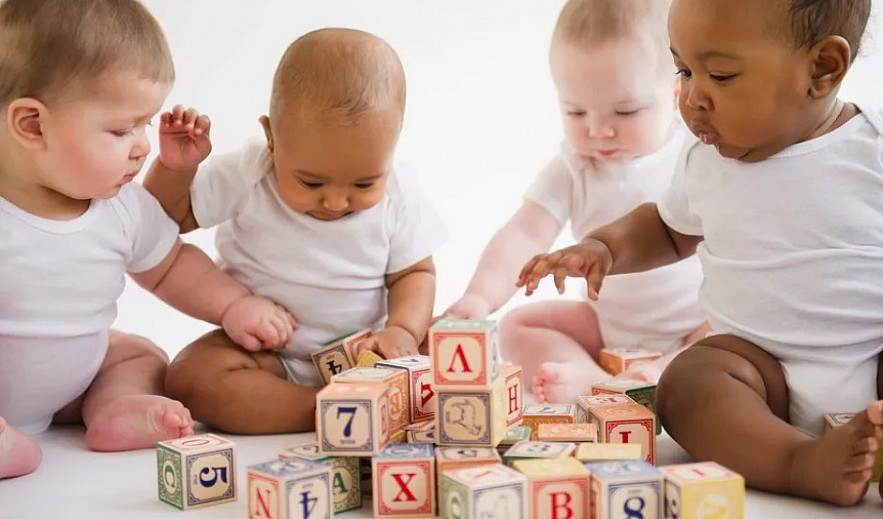How Many People Are Born Every Day? And Global Birth Rates
Births are fundamental to the continuation and development of human civilization, influencing everything from social structures to economic growth and cultural identity. Each day, thousands of new lives enter the world, shaping population patterns and driving change across continents. By examining how many people are born daily, we gain valuable insights into demographic trends, regional disparities, and the pressures placed on resources and infrastructure.
These numbers not only reflect the current state of global population dynamics but also highlight the challenges societies must address, such as urbanization, healthcare demand, education needs, and environmental concerns. In essence, birth statistics are a window into the present and future of humanity.
Read more: How Many Babies Are Born Each Day in the U.S and What’s Driving the Decline?
 |
| 385,000 babies are born worldwide every day |
Global Birth Statistics: A Snapshot
As of 2024, approximately 385,000 babies are born worldwide every day according to data from the United Nations Population Fund. This translates to an annual figure of over 140 million births globally. Despite this impressive number, the global birth rate has steadily declined over the last several decades.
In the 1960s, the average global birth rate was over 30 births per 1,000 people. Today, it has dropped to approximately 16.52 births per 1,000 people, reflecting a significant shift in reproductive behavior and societal norms. The Central African Republic leads the world in birth rates, with 45.35 births per 1,000 people, while the Vatican City holds the lowest rate, at just 4.21 births per 1,000 people.
Births in the United States
In the United States, the birth rate has also experienced a consistent decline. According to the Centers for Disease Control and Prevention (CDC), 3,667,758 babies were born in the U.S. in 2023, averaging approximately 9,852 births per day. The country’s crude birth rate stands at 10.74 births per 1,000 people, lower than the global average but higher than many developed nations.
Among U.S. states, Vermont has the lowest birth rate at 7.82 per 1,000 people, while Utah boasts the highest at 13.17 per 1,000. These figures highlight regional variations driven by cultural, economic, and social factors.
Factors Driving Birth Rate Trends
The decline in birth rates globally and nationally can be attributed to a combination of economic, social, and medical influences. Key factors include:
Increased Education and Employment for Women
Greater access to education and workforce participation among women has redefined life priorities, with many delaying or forgoing parenthood to pursue personal and professional goals.
Economic Uncertainty
Rising costs of living, housing, and childcare have deterred younger generations from starting families. Global crises, such as the COVID-19 pandemic, have further exacerbated economic insecurities, influencing reproductive decisions.
Access to Contraception
Improved access to effective contraceptive measures has empowered individuals and couples to control their reproductive choices, resulting in fewer unplanned pregnancies.
Changing Social Norms
Societal attitudes toward parenthood have shifted significantly. Many young people now find meaning and fulfillment outside of traditional family structures, embracing alternative lifestyles and priorities.
Health and Fertility Issues
Advances in healthcare have improved maternal health but have also revealed widespread fertility challenges. Conditions such as polycystic ovary syndrome (PCOS) and endometriosis are now better understood, yet they complicate family planning for many.
The Implications of Declining Birth Rates
Falling birth rates carry profound implications for governments, businesses, and societies. While a declining birth rate can reduce strain on natural resources and urban infrastructure, it also presents challenges:
Economic Impact
A reduced number of births can affect the economy in several ways:
- Labor Market: Fewer young people entering the workforce can lead to labor shortages and slower economic growth.
- Aging Population: With fewer births, the proportion of older adults increases, placing pressure on healthcare systems, pensions, and social security programs.
- Consumer Markets: Industries catering to children, such as toy manufacturers, baby food producers, and education providers, may face declining demand.
Education Systems
Fewer children born today could result in declining school enrollment. States like Minnesota, for instance, have already reduced their education budgets in response to projected enrollment drops.
Demographic Shifts
Birth rates also affect the composition of societies. A declining population growth rate can lead to cultural and racial imbalances in certain regions, reshaping communities and their identities.
How Birth Rates Are Calculated
Two primary metrics help track birth rates:
- Crude Birth Rate: This measures the number of live births per 1,000 people annually. It is calculated by dividing the total number of births by the average population size for the year.
- Fertility Rate: This metric specifically focuses on women of childbearing age (15–44 years) and calculates the average number of births per 1,000 women in this group annually.
In 2023, the U.S. fertility rate was 54.5 births per 1,000 women aged 15–44, a slight decline from 2022’s rate of 56.
Birth Rate Comparisons: U.S. vs. Global Trends
The United States fares better than many developed countries in terms of birth rate. For instance:
- Greenland has a crude birth rate of 14.1 births per 1,000 people, while Saint Pierre and Miquelon records just 5.2 per 1,000.
- In contrast, less developed countries, particularly in sub-Saharan Africa, report much higher rates. The Central African Republic's rate, at 45.35 per 1,000, highlights the stark difference in population dynamics across the globe.
Solutions to Address Declining Birth Rates
Several measures can help mitigate the challenges associated with declining birth rates:
- Work-Life Balance Initiatives: Policies such as paid parental leave, affordable childcare, and flexible work arrangements can encourage families to have more children.
- Economic Incentives: Governments can provide financial support, including tax benefits and housing subsidies, to ease the economic burden of raising children.
- Education and Awareness: Promoting family planning and addressing misconceptions about parenting can empower individuals to make informed reproductive choices.
Conclusion
Every day, hundreds of thousands of newborns take their first breath, each one shaping the future of our world. Yet, behind this miracle of life lies a noticeable decline in birth rates, driven by shifting cultural values, economic pressures, and breakthroughs in healthcare. This downward trend presents both demographic and economic challenges, prompting societies to rethink how they sustain balanced growth.
With thoughtful policies and evolving mindsets, it is possible to navigate these complexities and foster resilience. As we welcome new life into the world, understanding the patterns behind birth rates is key to preparing for a rapidly evolving and interconnected global society.
 What Is American Birthright Citizenship: Origins, Number, and Future What Is American Birthright Citizenship: Origins, Number, and Future Though taken for granted, birthright citizenship defines American identity. What does it mean, how did it start, and how does it affect the nation's future? ... |
 Which U.S. Citizens Could Be Deported Under Trump’s Plan? Which U.S. Citizens Could Be Deported Under Trump’s Plan? Donald Trump’s approach to immigration has consistently stirred debate, particularly regarding his controversial proposals on deportation. One of the most contentious aspects of his plan ... |























